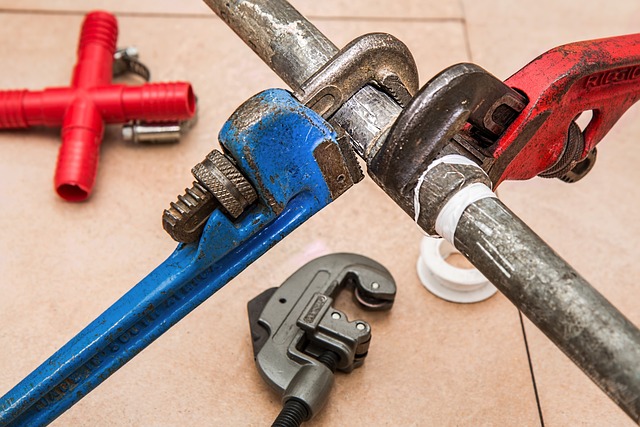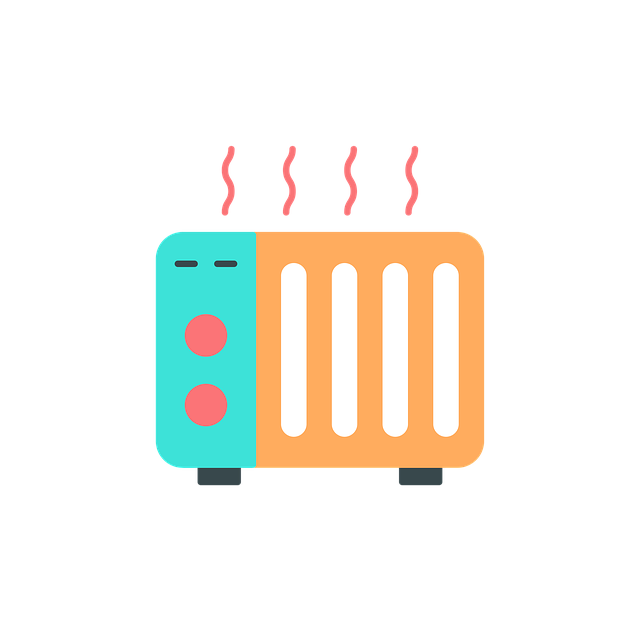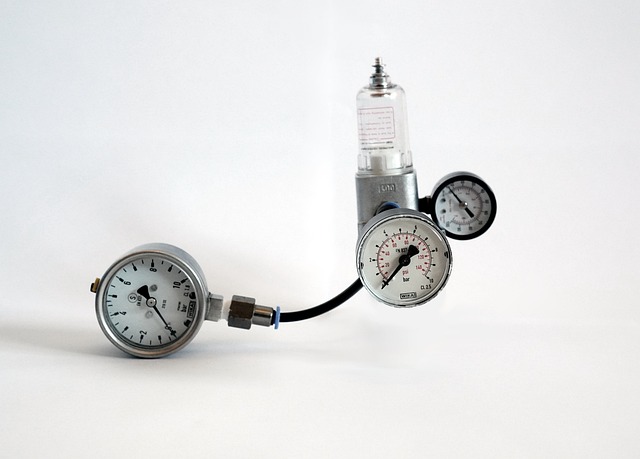Trenchless technology has transformed sewer line repairs, offering a minimally invasive method that reduces surface disruption, is eco-friendly, and offers cost savings compared to traditional excavation methods. Specialized plumbers can access damaged lines through existing entry points like manholes or small pits, employing techniques such as pipe bursting and sliplining to replace or rehabilitate old pipes with new ones without extensive digging. This approach utilizes sophisticated equipment and diagnostic tools for precise repairs, leading to quicker completion times and minimal impact on daily life and the environment. Trenchless technology not only streamlines the repair process but also promotes long-term cost savings, environmental sustainability, and structural stability of sewer lines. It's a superior choice for both residential and community settings, as it minimizes disruption, preserves surrounding structures and landscapes, and offers efficient repairs with less environmental impact. Plumbers skilled in trenchless methods can perform these repairs through small access points, saving time and reducing labor costs, ensuring robust sewer line repair with minimal interruption to daily activities. This modern plumbing solution is a sustainable, cost-effective approach to maintaining sewer systems, making it an ideal option for those seeking efficient and less disruptive repair solutions.
When confronted with the need for sewer line repairs, home and business owners alike face a critical decision. Traditional repair methods often involve extensive digging, causing significant disruption and property damage. However, trenchless technology offers a modern, efficient, and less invasive solution. This article delves into the transformative impact of trenchless technology in sewer line repairs, guiding readers through the evolution of repair methods, how these innovations work, their advantages over traditional techniques, and the critical steps involved in the process. From understanding the role of professional plumbers to analyzing costs, assessing environmental benefits, and exploring future industry advancements, this comprehensive guide provides valuable insights for anyone considering sewer line repair. Plumber expertise is paramount when navigating these repairs, ensuring minimal disruption and optimal results.
- Understanding Sewer Line Repairs with Trenchless Technology
- The Evolution of Sewer Line Repair Methods
- How Trenchless Technology Works in Sewer Line Repairs
- Advantages of Trenchless Sewer Line Repair Over Traditional Methods
Understanding Sewer Line Repairs with Trenchless Technology

When homeowners or municipalities require sewer line repairs, trenchless technology has emerged as a game-changing solution, often facilitated by skilled plumbers. This advanced method allows for the repair and maintenance of underground sewer lines without the need for extensive excavation. Traditional repair methods necessitate significant digging, leading to disrupted landscapes and potentially costly property restoration. In contrast, trenchless technology minimizes surface disruption, making it an environmentally friendly and efficient approach. It involves using sophisticated equipment to access the damaged sewer line through existing points of entry, such as manholes or small pits. The process typically includes methods like pipe bursting, where a new pipeline is pulled into place while simultaneously breaking up the old one, or sliplining, where a new pipe is inserted into the old one, effectively rehabilitating it without complete replacement. This not only reduces repair time but also cost. Skilled plumbers specializing in trenchless technology can pinpoint the location and nature of the problem using advanced cameras and diagnostic tools, ensuring precise and effective repairs. As a result, homeowners can enjoy their daily routines with minimal interruption, while local environments are preserved without the scar of traditional repair methods. This innovation not only streamlines the repair process but also contributes to long-term cost savings and environmental sustainability.
The Evolution of Sewer Line Repair Methods

The repair and maintenance of sewer lines have undergone a significant transformation over the years, reflecting advancements in technology and an understanding of infrastructure needs. Traditional methods involved extensive excavations, leading to disrupted streets, damaged landscapes, and considerable inconvenience to property owners. In those times, plumbers were tasked with manually accessing damaged pipes, often causing significant disturbances above ground. This process was not only labor-intensive but also time-consuming and costly.
As the industry evolved, innovative solutions emerged, leading to less invasive techniques. The advent of trenchless technology marked a pivotal shift in sewer line repair practices. This new approach allowed plumbers to diagnose, access, and repair underground pipelines without disturbing the ground surface. Trenchless methods, such as pipe bursting and pipe lining, have become increasingly popular due to their efficiency, cost-effectiveness, and minimal disruption. These techniques not only expedite the repair process but also ensure structural integrity of the sewer lines for years to come. The evolution from traditional to trenchless sewer line repair methods exemplifies a commitment to progress in plumbing technology, aligning with modern environmental and infrastructural standards.
How Trenchless Technology Works in Sewer Line Repairs

When a community’s or home’s sewer line requires repair, trenchless technology offers an advanced, efficient, and less disruptive solution compared to traditional excavation methods. This innovative approach involves minimal digging, as it relies on sophisticated machinery and techniques to access and fix damaged pipes without compromising the integrity of surrounding structures and landscapes.
The process begins with a thorough inspection of the existing sewer line using a camera system that identifies the exact location and nature of the damage. Once diagnosed, a plumber will determine the best trenchless method for the repair—either pipe bursting or slip lining. In pipe bursting, a bursting head is hydraulically pushed through the old pipeline while simultaneously laying a new pipe behind it. This bursts the old pipe apart and replaces it with a seamless, high-density polyethylene (HDPE) pipe. For slip lining, a new pipe is inserted into the old one, reinforcing its structure without replacing it entirely. Both methods are completed from two small access points, significantly reducing the need for large-scale excavation and the associated disruption to daily life and landscaping. This not only speeds up the repair process but also minimizes traffic interruptions, maintenance costs, and environmental impact while ensuring a durable, long-lasting sewer line repair.
Advantages of Trenchless Sewer Line Repair Over Traditional Methods

When considering the repair of sewer lines, modern trenchless technology presents a host of advantages over traditional excavation methods. This advanced approach to underground infrastructure repair minimizes surface disruption, which is a significant benefit for both residential and commercial properties. Unlike conventional techniques that require extensive digging to access and replace damaged pipes, trenchless methods allow plumbers to repair or replace sewer lines without the need for large-scale excavations. This not only preserves landscaping and hardscaping but also reduces the potential for property damage during repairs.
Moreover, trenchless technology is less labor-intensive, which translates to reduced costs for municipalities and homeowners alike. The process involves inserting a new pipe into the existing one using methods like pipe bursting or slip lining. These techniques are conducted from two small access points, drastically reducing the time required to complete the job compared to traditional trenching. Additionally, trenchless repairs ensure that the integrity of the sewer system is maintained with minimal disturbance to everyday life. Plumbers employing this method can restore full functionality of the sewer lines with efficiency and precision, resulting in a more sustainable and cost-effective solution for sewer line maintenance.
In recent years, the advancement of trenchless technology in sewer line repairs has revolutionized the industry, offering a less invasive and efficient solution compared to traditional excavation methods. This article has shed light on the evolution of these repair techniques, the mechanics behind trenchless technology, and the significant advantages it presents over conventional approaches. Homeowners and plumbers alike benefit from the minimal disruption and cost savings associated with this modern approach to sewer line maintenance. By understanding the nuances of trenchless repair systems, it is clear that this method not only preserves landscapes but also delivers a high-quality service that will continue to shape the future of sewer line repairs. As the demand for reliable and sustainable plumbing solutions grows, trenchless technology stands out as a key player in providing long-term, eco-friendly infrastructure solutions.
